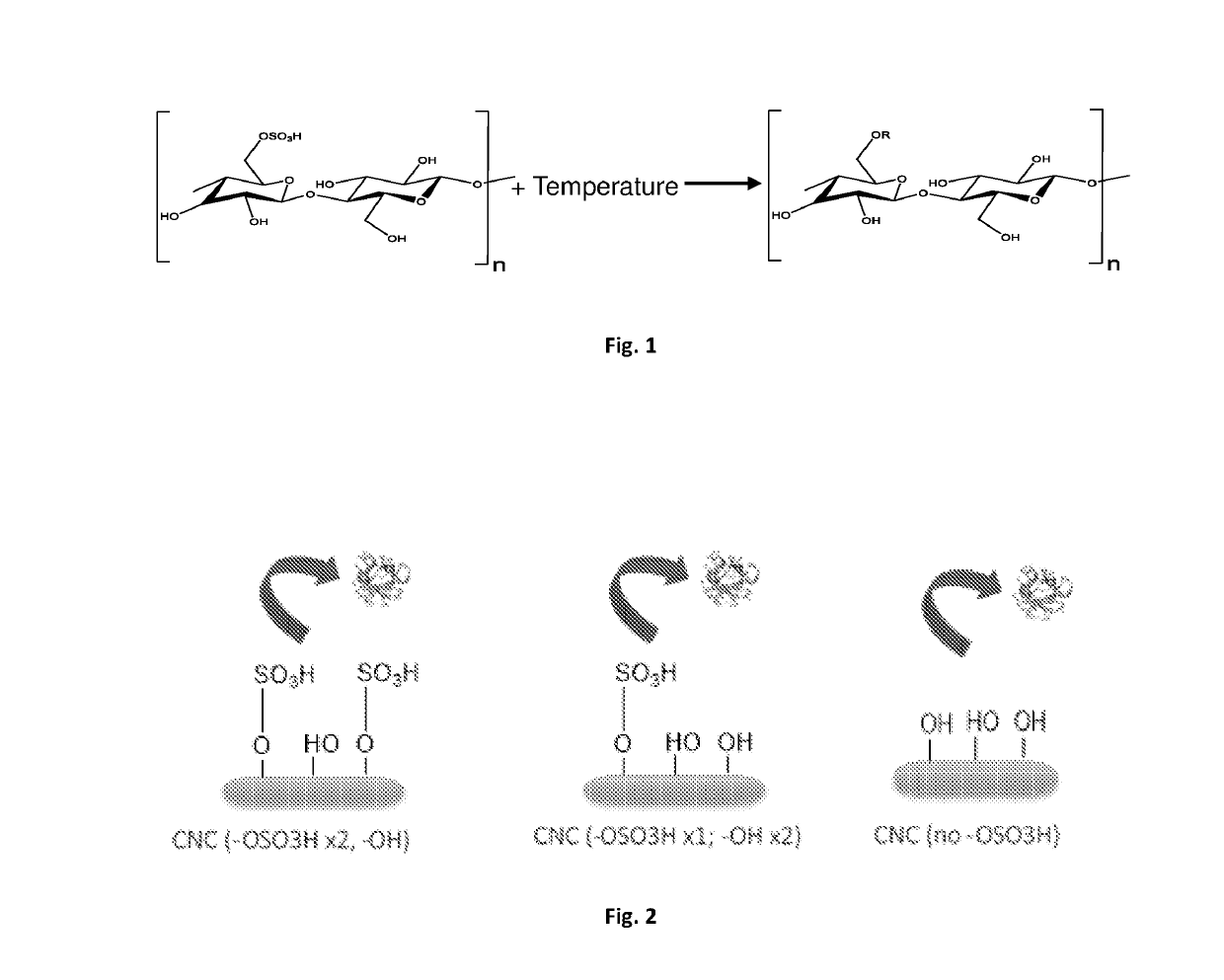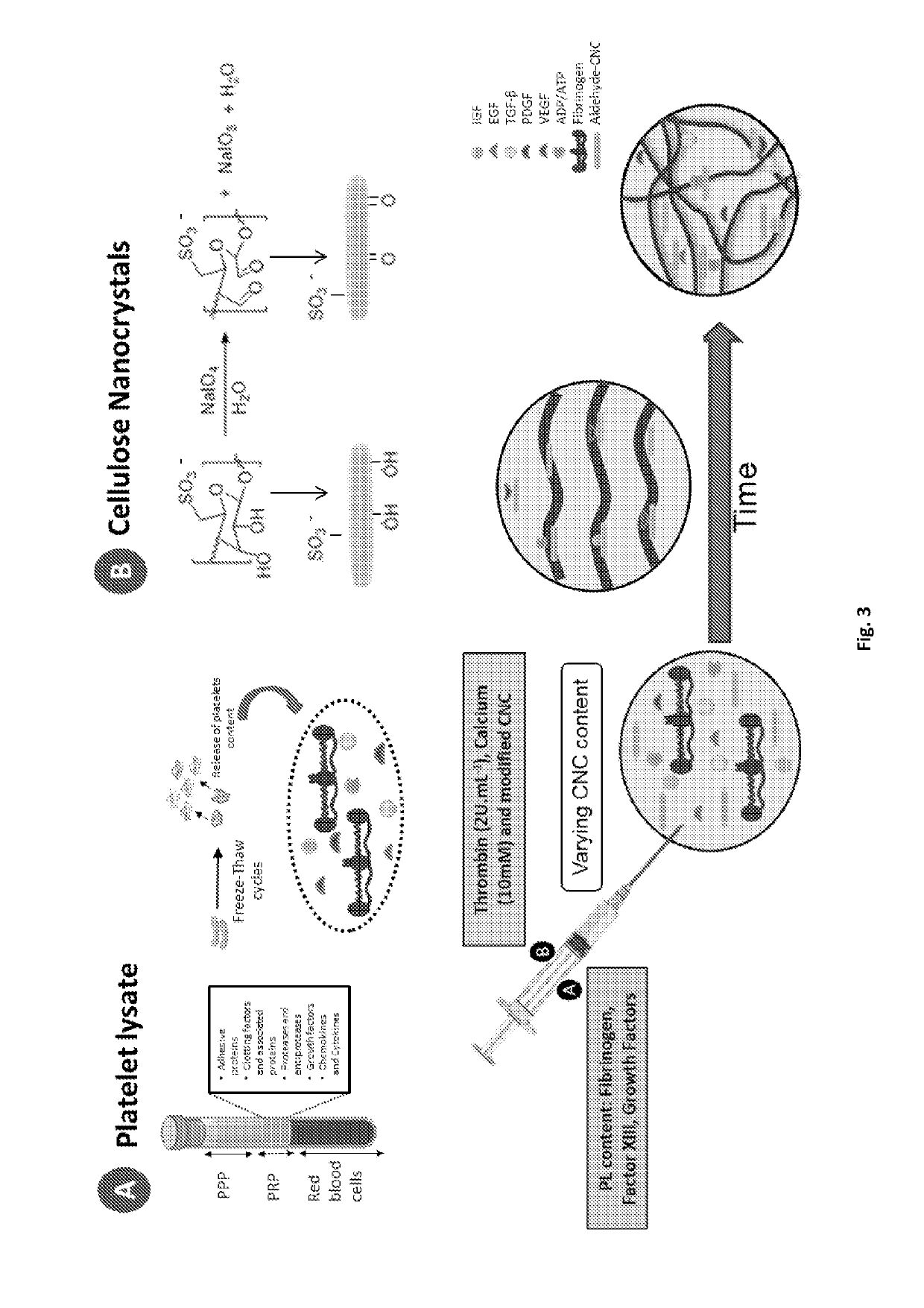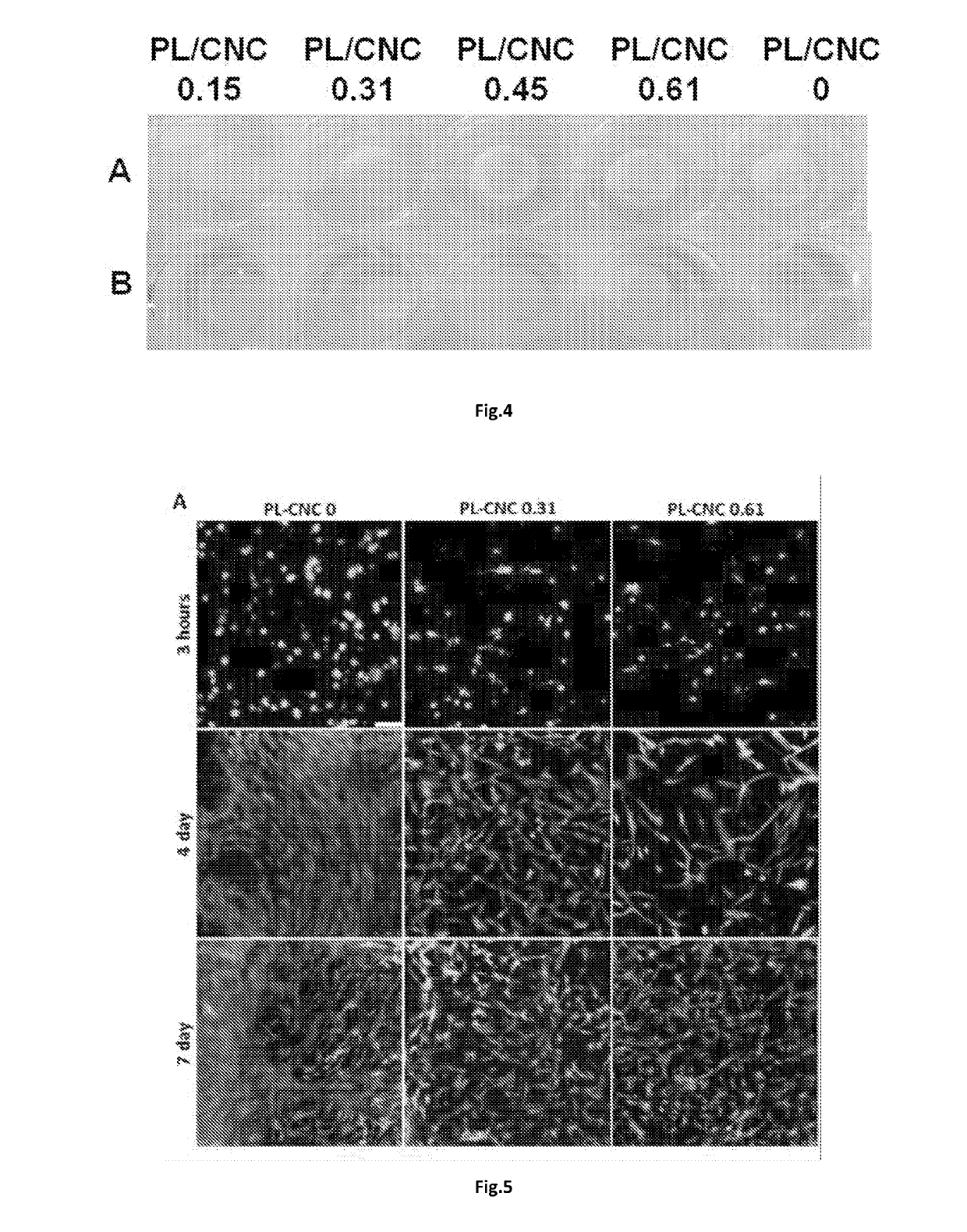Blood derivatives composite material, methods of production and uses thereof
a composite material and blood derivative technology, applied in the field of blood derivatives nanocomposite materials, can solve the problems of lack of standardization, limited mechanical properties, and bd-based strategies
- Summary
- Abstract
- Description
- Claims
- Application Information
AI Technical Summary
Benefits of technology
Problems solved by technology
Method used
Image
Examples
example 1
[0092]In an embodiment, sponges were prepared at room temperature using a double-barrel syringe fitted with a static mixer to ensure an effective mixing of the nanocomposite components.
[0093]Barrel A was filled with PL and barrel B with oxidized CNC presenting a certain sulfation degree (100 mmolKg−1 to 300 mmolKg−1).
[0094]Aqueous suspensions of CNC with varying concentrationsof 0% w / v (PL-CNC 0), 0.15% w / v (PL-CNC 0.15), 0.31% w / v (PL-CNC 0.31), 0.45% w / v (PL-CNC 0.45), and 0.61% w / v (PL-CNC 0.61) in 50% PL composition.
[0095]The PL / CNC mixtures were frozen and freeze-dried to produce PL / CNC nanocomposite sponges.
[0096]PL / CNC nanocomposite sponges were prepared in cylindrical acrylic molds of 9 mm diameter and 5 mm height. Alternatively, the PL / CNC mixtures may be poured into any form or mold having the desired final material shape.
[0097]In an embodiment, CNC incorporation lead to an improvement of PL stability (FIG. 4) and hydrogels with higher CNC content showed lower degradation ...
example 2
[0102]In an embodiment, sponges were prepared at room temperature using a double-barrel syringe fitted with a static mixer to ensure an effective mixing of the nanocomposite components.
[0103]Barrel A was filled with PL and barrel B with oxidized CNC presenting a certain sulfation degree (100 mmolKg−1 to 300 mmolKg−1), calcium, and thrombin.
[0104]Aqueous suspensions of CNC with varying concentrations of 0% w / v (PL-CNC 0), 0.15% w / v (PL-CNC 0.15), 0.31% w / v (PL-CNC 0.31), 0.45% w / v (PL-CNC 0.45), and 0.61% w / v (PL-CNC 0.61) in 50% PL composition.
[0105]The precursor solutions were then hand extruded into cylindrical acrylic molds of 9 mm diameter and 5 mm height and incubated at 37° C. for a certain period of time to allow fibrin fibrillation to proceed. Alternatively, the PL / CNC mixtures may be poured into any form or mold having the desired final material shape.
[0106]The PL / CNC mixtures were frozen and freeze-dried to produce crosslinked PL / CNC nanocomposite sponges.
example 3
[0107]In an embodiment, hydrogels were prepared at room temperature using a Double-barrel syringe (1:1) with a mixer tip was used to produce this system (L-System, Medmix, Switzerland). promoting the in situ PL-clotting via thrombin and calcium activation along with the CNC / protein covalent crosslinking.
[0108]Barrel A was filled with PL (67.6 mg / mL of total protein) composed of albumin, growth factors, cytokines and structural proteins (such as fibrinogen, vitronectin and fibronectin) [3, 4].
[0109]Barrel B was composed of thrombin (2 U.mL-1), calcium (10 mM) and a-CNC water dispersions presenting a certain sulfation degree (100 mmolKg−1 to 300 mmolKg−1).
[0110]Aqueous suspensions of CNC with varying concentrations of 0% w / v (PL-CNC 0), 0.15% w / v (PL-CNC 0.15), 0.31% w / v (PL-CNC 0.31), 0.45% w / v (PL-CNC 0.45), and 0.61% w / v (PL-CNC 0.61) in 50% PL composition.
[0111]The precursor solutions were then hand extruded into cylindrical acrylic molds of 9 mm diameter and 5 mm height and incub...
PUM
| Property | Measurement | Unit |
|---|---|---|
| length | aaaaa | aaaaa |
| width | aaaaa | aaaaa |
| width | aaaaa | aaaaa |
Abstract
Description
Claims
Application Information
 Login to View More
Login to View More - R&D
- Intellectual Property
- Life Sciences
- Materials
- Tech Scout
- Unparalleled Data Quality
- Higher Quality Content
- 60% Fewer Hallucinations
Browse by: Latest US Patents, China's latest patents, Technical Efficacy Thesaurus, Application Domain, Technology Topic, Popular Technical Reports.
© 2025 PatSnap. All rights reserved.Legal|Privacy policy|Modern Slavery Act Transparency Statement|Sitemap|About US| Contact US: help@patsnap.com



